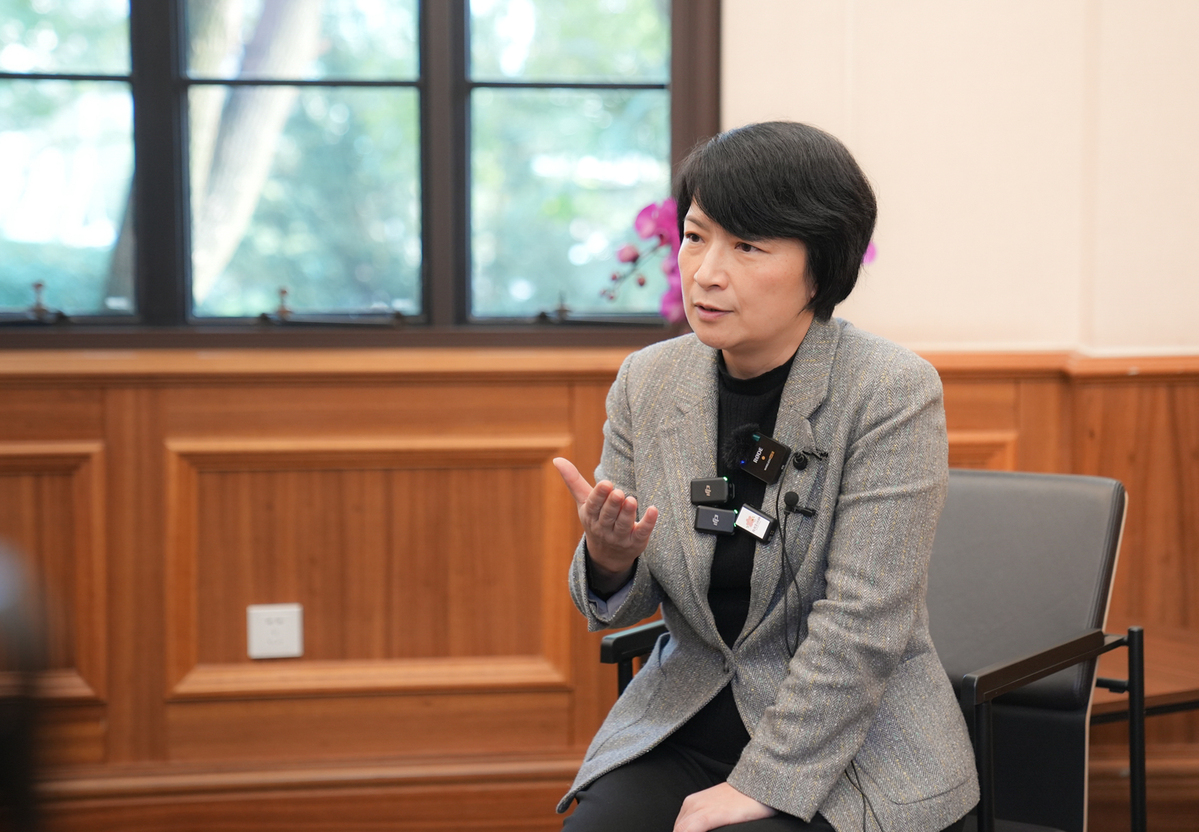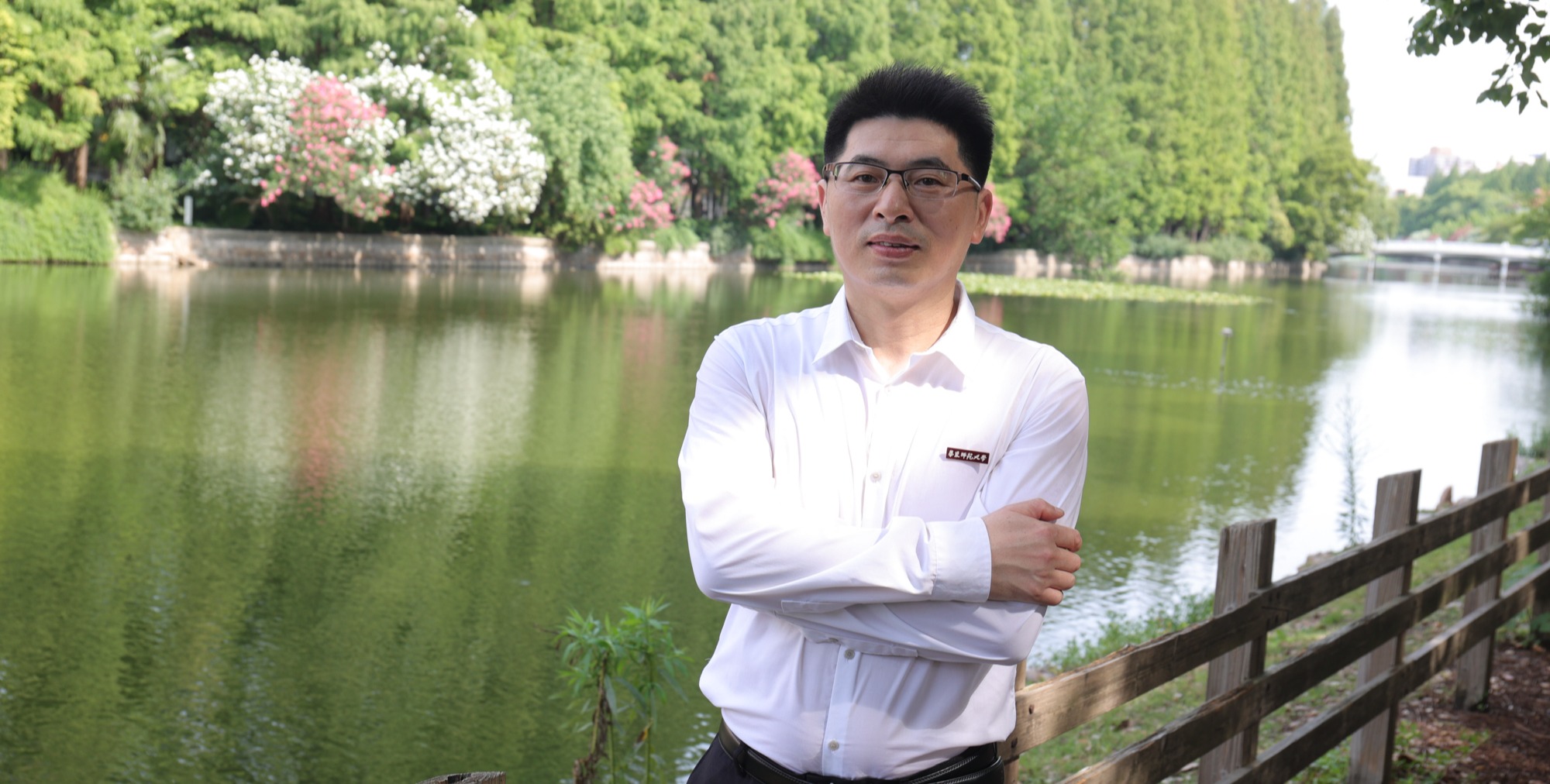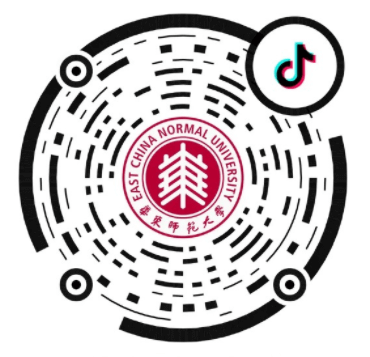LED by academician
The scientists have discovered a general theory in half metal of 2D A-type antiferromagnetics, and designed a model of a new type of 2D half-metallic spin-field effect transistor.
The study “Electrically induced 2D half-metallic antiferromagnets and spin field effect transistors was published in the PNAS (Proceedings of the National Academy of Sciences of the
Xiang Zhang, a professor with the
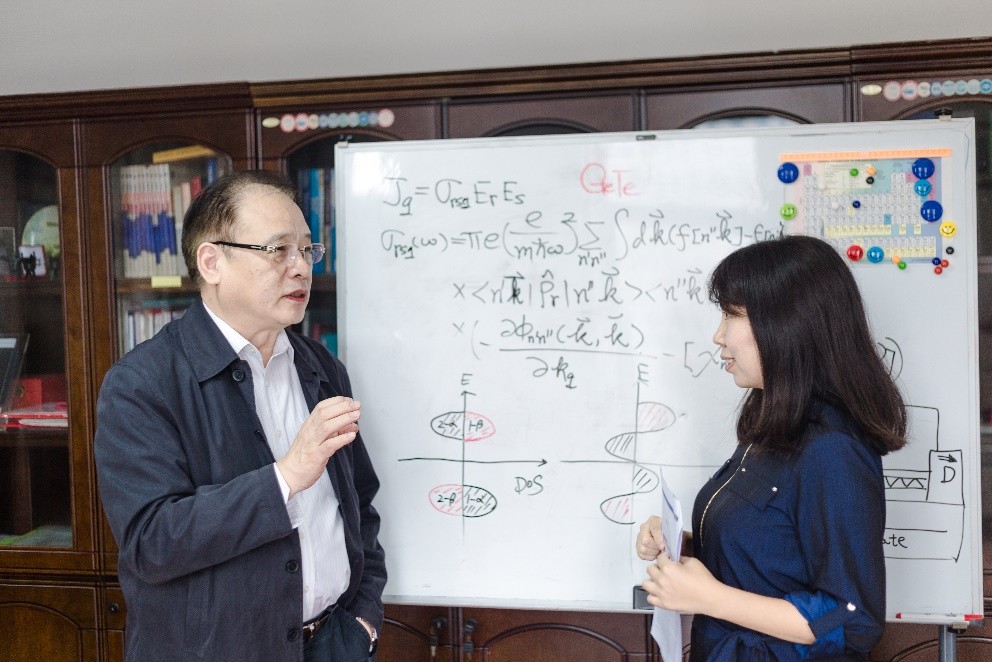
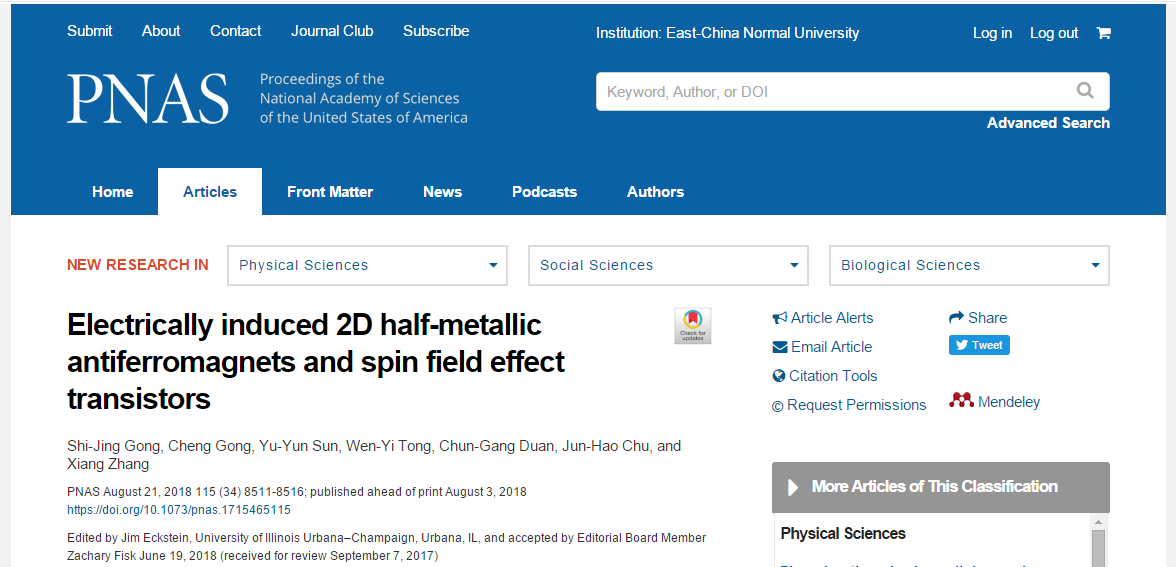
A significant of research was published in the PNAS.
Gong Shijing has specialized in spintronics research since she began to work at ECNU in 2010. She has accumulated rich experiences in the research of spinning regulation in traditional semiconductor materials, especially the whole-circuit spinning regulation that functions under the influence of spin-orbit coupling.
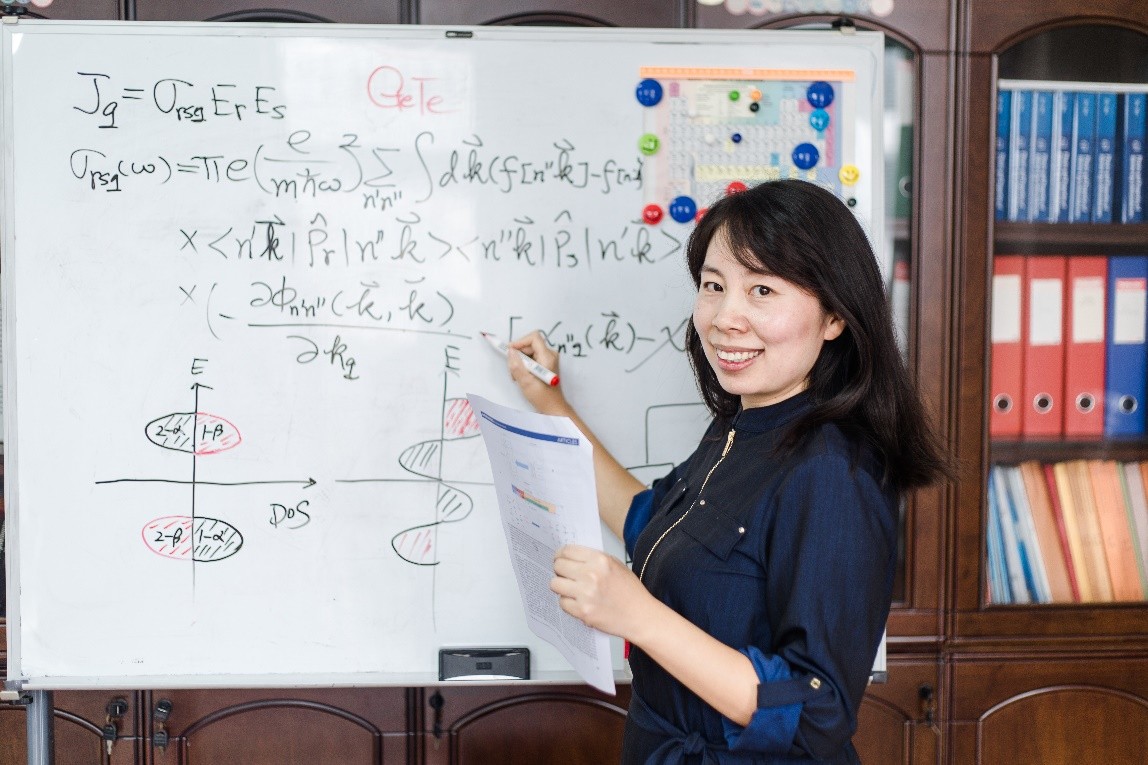
Gong Shijing from ECNU's
She has published more than 40 essays in world-renowned academic journals such as Physics, Physical Review Letters, Nature, Communications, and Advanced Energy Materials. Combining her research skills of electricity-driven magnetism with properties of 2D magnetic materials, her progress in 2D antiferromagnets research is remarkable.
Opportunities and challenges facing antiferromagnetic studies:
French physicist Louis E.F. Neel was a co-recipient of the Nobel Prize for Physics in 1970 for his pioneering studies of the magnetic properties of solids. In his Nobel Prize speech, he said: Antiferromagnetic materials are extremely interesting from the theoretical viewpoint, but do not seem to have any applications.”
Though with great theoretical research value, the magnetic structure of antiferromagnetic materials is hard to measure because their macroscopic magnetic moment is zero, which hinders applications of the materials.
In 2004, British scientists Andre Geim and Konstantin Novoselov of the
During an experiment on electronic structures of bi-layer 2D magnetic materials, Cr2Ge2Te6 and VSe2, the researchers found that half metallicity holds a great potential for studying a 100% spin-polarized current for high-efficiency spintronics arising from the metallic nature of electrons with singular spin polarization, which at the same time insulates for oppositely polarized electrons.
A following analysis indicated that a vertical electrical field is a generic and effective way to achieve half metallicity in A-type antiferromagnetic bilayers and thereby the spin field effect transistor.
The researchers were thrilled at the findings and were also excited when reading the study, commenting “I am excited to read it” and “The idea is simple, clever, and general.”
The electronic band change of A-type antiferromagnetic bi-layers in vertical electrical field is quite simple. Picture A shows the electronic band of A-type antiferromagnetic bilayers in non-external electrical field, with layer -1 and layer-2 having opposite spin properties. Picture B shows the structure of A-type antiferromagnetic bi-layers. Electric fields lift energy levels of the constituent layers in opposite directions, leading to the gradual closure of the gap of singular spin-polarized states and the opening of the gap of the others. When the electrical field reaches critical, the semiconductor and metal phase transition happened, which realized half metallicity in A-type antiferromagnetic bilayers (as shown in Picture C).
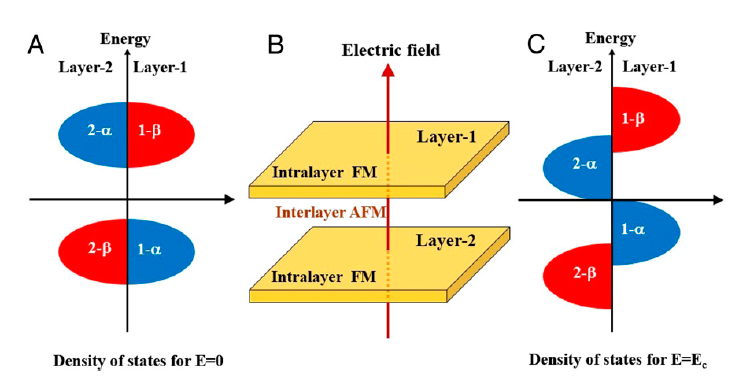
The significance of these findings lies in that it brings scientists one step closer to realize a new-type spin field effect transistor, a fundamental device in spintronics. It has proved that when the vertical electric field is greater than a critical value, it generates the 100% upward spin-polarized current, and vice versa.
The spin-field effect transistor was proposed by Datta and Das in 1990. It relied on precise control of spin precession, which is quite difficult in experiments. By contrast, the new-type transistor proposed by ECNU researchers is more practicable because it can be achieved by changing electronic structures of A-type antiferromagnetic bi-layers with the help of electrical field..
After rounds of discussions with other collaborators on the experiment, the researchers added a feasibility analysis into the study essay, elaborating on problems that might occur in achieving the new-type spin field effect transistor, including device working temperature, 2D domain size, electrode impact, and the impact of the density of 2D magnetic materials on device performance.
Thanks to joint efforts of the research team and Dr. Xiang Zhang, the essay has great academic and application values. During the experiment, we realized that good theoretical research should go beyond producing a new theory or idea, and instead be able to enlighten following experiments and foresee as many difficulties as possible that may occur, Gong Shijing said.
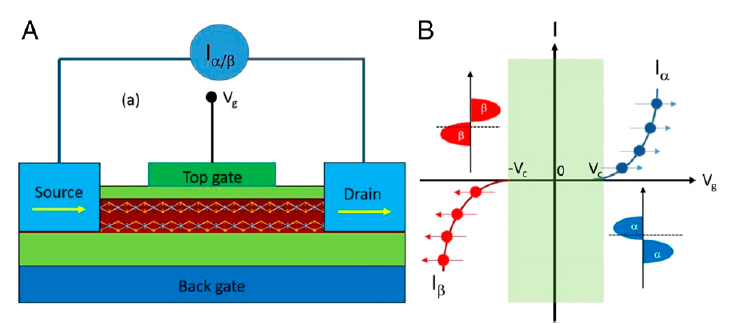
The originality of the fundamental research is very important. But normally, people are slow to realize its importance compared with technological breakthroughs in the field of application. It requires fundamental researchers to be patient and persistent,
Sun Yuyun, Du Erwei and Wei Yue are three postgraduate students with the
He also led a number of key state fundamental research projects and has put all his energy into the development and talent training of the
The research also gained support from the National Natural Science Foundation of China, the National Science Foundation of the
Edited by Siyuan Zhang Proofread by Joshua Mayfield Reviewed by Wenjun Guo



